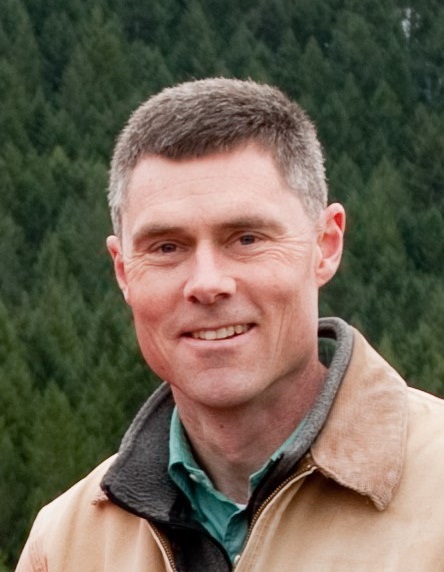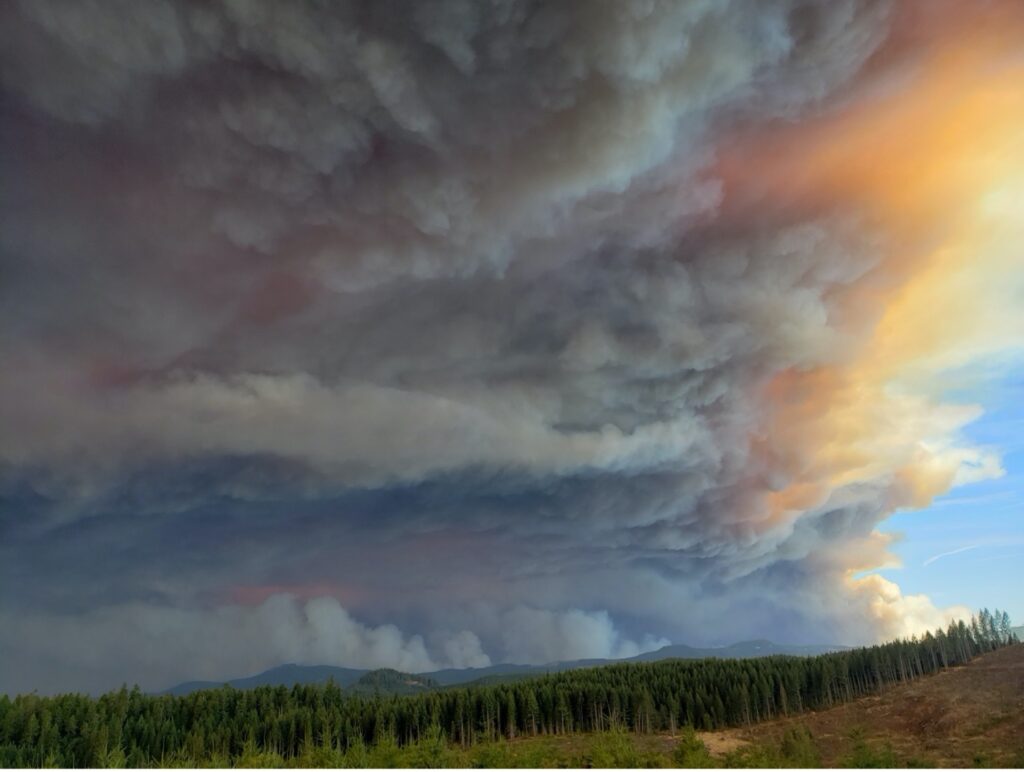
Work. Play. Renew.
Ask a forester: How to restore forests after wildfires

Labor Day 2020 brought massive wildfires that destroyed forests, homes and livelihoods. Hot, dry and windy conditions conspired to create massive blazes and debilitating smoke across the state. Now that the fires are out, blackened forests remain in their wake.
How does this impact Oregon foresters working to restore these forests to their healthy conditions? That’s what we asked Ted Reiss, Direct of Timberlands with Seneca Jones Timber Co.
Q: What’s the biggest challenge for foresters after a fire?
A: Assessment of damage and decision-making for road rehabilitation, restoration harvest, and reforestation efforts. That begins a complete rework of future efforts. Forest managers normally have a five-year planning horizon for all forest operations. Fires cause foresters to completely rewrite those planning efforts in a very short period.
Q: Is it dangerous to be in a badly burned forest?
A: Yes, road failures may be present but difficult to identify, weakened drainage structures like culverts may fail under vehicles, severely burned trees fall without warning, soil, and rock move after organic matter built up on the forest floor, known as duff, and logs are burned up. All these hazards may be present in a burned forest, especially a severely burned forest where all these hazards will be present.
Q: What’s the best time for getting in and recovering a blackened forest?
A: After a wildfire, some wood is still of good quality, so long as fire has only blackened the bark, for about one and a half years. The best timeline for restoration work following a fire is to begin immediately and move as quickly as possible to perform restoration harvest and reforestation work. Burned timber will begin naturally decomposing almost immediately. That process begins to severely degrade wood quality in the second spring season following a tree dying from fire, or eventually dying because of the stress caused by fire. Soon thereafter, burned trees are highly susceptible to insect and disease infestation that can spread quickly to nearby healthy trees, furthering the devastation in the forest. There is a brief time frame to assess damage, plan and execute road access work, and harvest the burned timber in the PNW where winters are long and wet and tend to limit some forms of the work required.
Q: How is logging burned trees different than live trees?
A: Safety risks from slips, trips, and falls increase exponentially in a burned forest because organic matter that act as anchoring mechanisms have been stripped away. In a severely burned forest, including many thousands of acres within the fire areas that burned in September of 2020, all the organic matter normally present has been burned. That includes the organic duff layer, decomposing logs, green and dead brushy plants, ferns, etc. The organic matter that holds soil, rocks, and trees in place, especially on steep slopes, has often been eliminated, increasing risks of injury to those in the woods.

Q: Do you plant different species than what was there before the fire?
A: The best growth and health of a forest comes when native forest species are growing in proper locations for their needs. This is called silviculture – a forestry term for assessing what a tree needs for its best natural growth. We assess each burned or harvested area based on those principles and replant with large, healthy seedlings that would naturally be growing on that site. That is how a forest regains its natural health and grows well into the future.
Q: Are there enough of these seedlings for all of Oregon (and even California’s burned lands)?
In Oregon, each year approximately 40 million trees are planted in reforestation efforts, and those seedlings have been growing in nurseries for one to two years before we plant them in the forest. The fires that raged in September of 2020 have devastated roughly four times more acres than would be harvested in a normal year, and the seedling nurseries were not planning for that. Demand for seedlings will outstrip supply in the extreme over the next several years. It will likely take four or five years to fully replant just the private property within the fire areas in Oregon, let alone public lands.
Q: What steps do you take to recover and/or protect streams and soils?
A: Immediately following a fire event we begin assessment of road system integrity. General road maintenance, culvert replacement to ensure stream flow and fish passage under bridges, bridge assessment and reconstruction, and adding gravel to roads happens immediately to protect water quality and soil structure adjacent to access roads and streams. This is the single most important step we take to protect water quality immediately following a fire. Continued monitoring and maintenance efforts provide for longer term protection. We also utilize straw bales and mulch, grass and native plant seeding efforts (which also provides food for hungry wildlife), and immediate reforestation efforts (if we have seedlings available) to protect water and soil quality for the medium and long term. After the initial work to avoid problems with soil movement near road systems, prompt reforestation efforts are critical to keep water and soil quality trending in the right direction toward a healthy forest system for decades to come.
Q: What does it cost and who pays for it? (we read $1,000 an acre, is that correct?)
A: Road system rehabilitation following a fire event can cost hundreds of thousands of dollars. Those costs are dependent on how large the fire was, how much of the roads are an individual landowner’s responsibility, and how severely the fire burned. At Seneca we lost 10,000 acres in the Archie Creek Fire. For example, we will likely replace a total of 150 roadway culverts that either melted in the heat of the fire or were damaged by the end of our rehabilitation efforts. Each replacement costs about $2,500. General road maintenance will continue as described above and costs will continue to add up.
Modern reforestation efforts including costs for seedlings, planting, crop protection measures, follow-up monitoring, and follow-up replanting efforts, if required, are more than $1,000 per acre to get the new forest through the first five years and growing well. These costs are all paid by the landowner.
Q: In your experience, do forests that have been managed/harvested do better during fire than forests that are not?
A: In my experience, damage caused by fire is determined by several key forest conditions that determine the outcome of a fire event.
- Fuel: Fires burn at higher intensity as the amount of available fuel increases and the amount of moisture in those fuels decrease along with other factors like topography and wind speed. Managed forests tend to have much less fuel than unmanaged forests. This is a result of forest management activities such as harvesting timber and performing wildfire fuel reduction projects over time. The only exception to this occurs in very young new forests that are highly susceptible to damage because they are immature, have critical growing structures like branches and needles close to the ground, and have thin protective bark structure.
- Access: Wildland firefighters must fight fire aggressively but provide for safety first. Well-maintained forest access roads and trails provide safe, timely and efficient access to a fire area for professional forest managers and firefighters to keep fires small. Forests where active management is underway have access maintained for management activities occurring over the long term. Unmanaged lands tend to have fewer access roads with more problems arising from deferred maintenance.
- Weather: The fires of September 2020 were extreme events caused by a historic offshore (easterly) wind event that occurred throughout the region. Winds were extreme and the air was so dry that fire starts raged out of control providing no opportunity for fire fighters to gain control while they were small. The fires increased in size and intensity quickly and throughout that wind event burning everything in their path without regard for previous forest management activities or the lack thereof. All property owners were devastated by the fires during this wind event. When the winds subsided, and normal weather conditions prevailed, the first two forest conditions mentioned above played a much larger role in determining the effectiveness of firefighting efforts.
- Natural Fire Starts: Lightning causes most of the natural fire starts in the western US. Unmanaged forests tend to have a higher number of old dead and dying trees that provide good fuel, in the correct configuration, to start a wildfire from lightning. Managed forests tend to have less of those trees available for lightning caused fires. That is why we experience most natural caused fires starting in unmanaged forests each year.